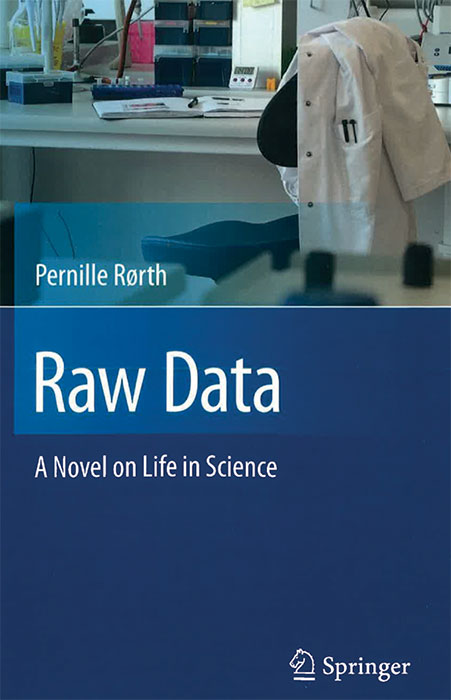By Pernille Rørth
Springer

Raw Data is a scientific novel that explores the moral dilemmas surrounding the accidental discovery of a case of scientific misconduct within a top US biomedical institute.
The choice of subject is interesting and unusual. Scientific misconduct is not an unprecedented topic for scientific novels, but the focus is usually on spectacular frauds that clearly violate the ethos of the scientific community. This story depicts a more nuanced situation. Readers may even find themselves understanding, if not condoning, the conscious decision of one of the co-protagonists to cheat.
This character chooses to “cut a corner” out of fear of being scooped, to satisfy an unreasonably picky reviewer who had requested an additional control experiment that she deems irrelevant. The stakes for her career are huge because she is competing with other groups on the same research line, and publishing second would cost her a great deal academically. When a co-worker accidentally finds hints of her fabrication and immediately alerts the laboratory’s principal investigator, both find themselves in a bitter no-win situation. “Doing the right thing” has a significant cost, but any other option potentially entails far worse consequences for their careers and their reputations.
Along the way, the author illustrates vividly how people in research think, feel, work and live. Work–life balance in science, especially for young female researchers, is a secondary theme of the book. Overall, the portrait of academia is not a flattering one, but definitely faithful. As someone who works in high-energy physics, I learnt about day-by-day practices in the biomedical sector and how it differs from mine. Although the author focuses on her own area of the scientific environment, some descriptions of “postdoc life” are quite general.
This relatively short novel is followed by a long Q&A section with the author, a former biomedical researcher who left the field after some considerable career achievements. There she makes her opinions explicit about several of the topics, including the “publish or perish” attitude, work–life balance, scientific integrity, and what she perceives as systemic dangers for the academic research world.
Although the author clearly made an effort to simplify the science to the minimum needed to understand the plot (and as a reader with no understanding of microbiology I found her effort successful), I am not sure that a reader with no previous interest in science would be hooked by the story. The book is well written, but the plot has a slow pace and, while Springer deserves credit for publishing it, the text contains many typographical errors.
Overall, I recommend the book to other scientists, regardless of their specialisation, and to the scientifically educated public who may appreciate this insider view of contemporary research life.







